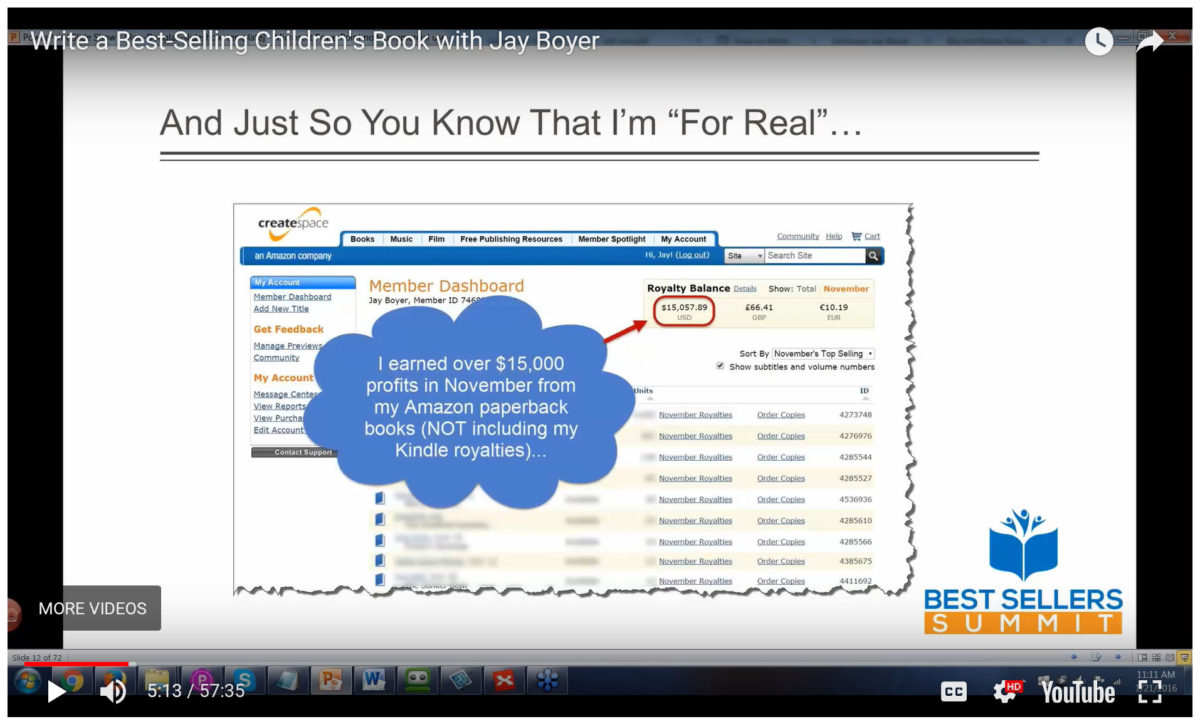Creating and publishing children’s books can be a rewarding and lucrative career path for any aspiring writer. Children read more often than adults do and since their books are shorter, they can read multiple books in a single afternoon. This demand has created a booming niche that’s grown even more popular thanks to the birth of the self-publishing industry.
How Authors Make Money from Children’s Books
Writing a children’s book alone won’t make you an overnight millionaire. Most authors have to publish a few books before they get some traction. But the good news is you can afford to live off of your book income once you have several titles published.
Whether traditionally published or self-published, authors earn what are called book royalties. This means that you make a few cents or few dollars every time someone buys your book. You can expect to see royalties every 6 months if you’re traditionally published or every 2-3 months if you’ve self-published.
Depending on how you’re published, you may receive between 1-6 paychecks each year. Keep in mind that you’re getting paid for several months’ sales. This means you may see high four-figure or even five-figure checks.
Another advantage of writing for the children’s book market is that you can expect bulk sales. Libraries and schools will often purchase a few hundred copies of your book at a time. That can boost your royalty checks even further.
Some authors make additional money by speaking at schools and libraries. They create workshops and speeches around their book topics. For example, if you published a children’s book about a safari, then a workshop about zoo animals would be ideal.
Need Ideas for Children’s Books?
If you want to regularly publish children’s books, then you need to come up with fresh ideas regularly. Fortunately, there are plenty of ideas all around if you’ll just take the time to stop and notice them.
Consider your childhood. What were the pivotal moments you experienced? These can be experiences that were funny, traumatic, or wonderful. When you come up with an experience, think about how you can build a story or narrative around that memory.
It can also be helpful to spend time with kids. Volunteer to read a story to kids at your local library once a week. Coach a Little League team. Help out at your local YMCA. Listen to the kids around you. If you pay attention, you’ll begin to spot what kids fear, what challenges them, what they want more of, and how they want to be supported.
If you’ve raised children of your own, you can also look for ideas from them. But be sure to protect their privacy. Giving the main character of your book the same name as your son may seem sweet. But if your book is about bed-wetting or another embarrassing problem, then your son may end up teased. It’s fine to take inspiration from your kids but be sure to change the details so that no one would suspect the story was about them.
Give an old topic a fresh spin. Some stories are timeless for a reason—it’s because kids love hearing about them again and again. Think about your favorite fairy tale or legends or even mythical creatures. What would happen if you changed the ages, genders, or details of these characters? What if the story had a different ending?
How to Put Your Book Together
Once you’ve written your book, it’s time to publish it. Some authors want to be traditionally published so they don’t have to handle the business side of writing. If that describes you, then you might want to purchase a copy of the Children’s Writer’s & Illustrator’s Market 2018. This book has plenty of helpful advice for children’s authors. Plus, it contains the names of editors and tips on how you can share your work with them.
If you like the idea of publishing your books yourself and enjoy learning new things, then self-publishing through a platform like Kindle Direct Publishing might be right for you. You should also watch the presentation by Jay Boyer on self-publishing books that you’ll see at the bottom of this page.
But it’s not enough just to have your story written. You also need to find a good children’s book editor to contribute the art to your book. Pick someone whose art style you like and whose personality you enjoy because you’ll be working closely together.
After your book is complete, test it out on several devices. You want to make sure it displays correctly. When you’re happy with your layout, you can click the publish button and begin celebrating!
Publishing your children’s book can be a full-time job or just a fun hobby. It’s up to you to decide how much of your time and your attention you want to dedicate to your writing career.
What to Do Next: Learn from a Kids Book Self-Publishing Pro…for Free
One the favorite presenters at our annual Best Sellers Summit is Jay Boyer, who lays out an easy-to-follow plan for creating, publishing and marketing children’s books.
You can see his “How to Write & Publish a #1 Best-Selling Children’s Book (in 7 Days or Less…)” presentation below. You can also grab the summary notes and transcripts of this presentation if you prefer.
Notes and Transcripts (zip)
